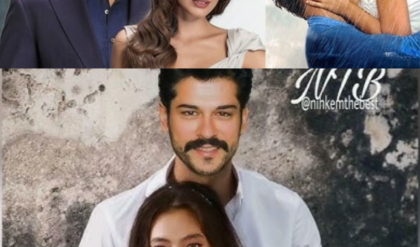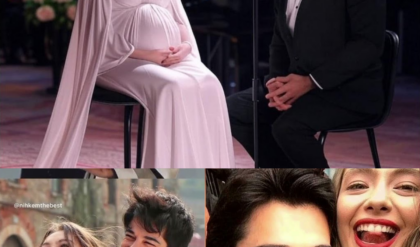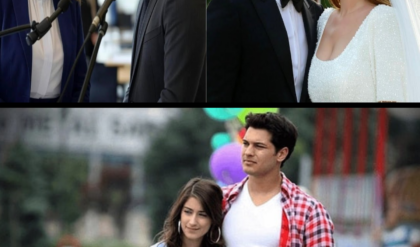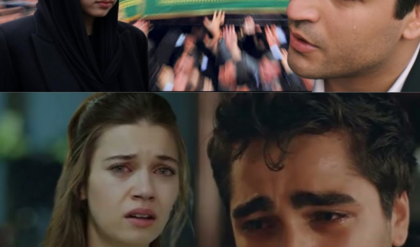The Extraordinary Marriage Of Queen Elizabeth II & Prince Philip
.
.
.
Queen Elizabeth II and Prince Philip, Duke of Edinburgh attend a Service of Commemoration to mark the end of combat operations in Iraq at St Paul’s Cathedral on October 9, 2009 in London, England. (Photo by Samir Hussein/WireImage)
At the end of one of the royal couple’s many trips to Canada, a well-meaning if unimaginative official asked Prince Philip, duke of Edinburgh: “How was your flight?” It’s the kind of mindless chat that drives the Queen’s hubby to distraction. “Have you flown in a plane,” he asked the hapless official. “Yes? Well, it was just like that.” Queen Elizabeth II, his wife of 62 years, would never be so cutting. One has to wonder, though, after 58 years on the throne, some 375 functions a year and visits to 132 nations, give or take, if the 84-year-old monarch isn’t tempted at times to let fly a zinger or two.
Inevitably, when she and Philip arrive in Halifax on June 28 for this, her 22nd official Canadian tour as Queen, someone will inquire about her journey. And over the nine days of the visit—which also include stops in Ottawa, Winnipeg, Toronto and Waterloo, Ont.—many more will comment on the weather or her hat, and inquire about her grandchildren or the corgis. To all these she’ll offer replies so sweet and innocuous that hovering reporters will shut their notebooks in despair.
It is the 89-year-old duke you want to follow with pen at the ready. He has “ably resisted the influence of political correctness and retained a fondness for a good joke,” noted the Telegraph with affection, “subsequently having to apologize to Indians, the deaf, Scots, tourists, Canadians, the unemployed, Tom Jones, British women and Cantonese cooks, to name but a few.” These supposed gaffes are just the prince speaking his mind, or kicking the stuffiness out of an occasion with an occasionally off-target quip, or, God forbid, offering an honest opinion. (“We don’t come here for our health. We can think of other ways of enjoying ourselves,” he once said of Canada. “Bloody awful,” he said of Jones, the Welsh warbler. Hey, fair comment.)
The duke never speaks for the Queen but perhaps he acts as a relief valve, when the relentless volume of ribbon cuttings, plaque unveilings and cucumber sandwiches threatens to red-line the royal constitution. At one event, Philip sidled up to a blind woman with a seeing-eye dog and said: “Do you know they’re now producing eating dogs for anorexics?” Had the Queen said that, Buckingham Palace would still be sweeping up the mess. As it was, well, Philip was being Philip. And, really, it’s not a bad joke.
The Queen has said of her outspoken hubby, “I gave up trying to stop him years ago.” But, really, how hard does she try? By all accounts she’s not without a sense of humour. During a visit when Lech Walesa was Polish president she confided to an aide, “He only knows two English words.” Then, after a pause: “They are quite interesting words.”
Most Canadians have known no other monarch, or consort. Elizabeth and Philip have gone from the dashing young princess and duke who square danced at Rideau Hall in 1951, to a pair of royal grandparents who pop in for occasional feast days, giving us a chance to practise our manners, break out the good china, and puff out our chests. (Look, Your Majesty, she’ll hear in Waterloo, we invented the BlackBerry!)
Garry Toffoli, co-author of Queen and Consort and the Toronto-based executive director of the Canadian Royal Heritage Trust, affectionately calls the Queen “this matronly figure of stability, tradition and continuity.” Yet stability does not mean stasis. In her time, Britain and Canada have changed almost beyond recognition. Her marriage in 1947 came just two years after the war’s end. Life was hard enough that the festivities had to be scaled back somewhat. Hundreds of ordinary women offered the princess their precious nylon stockings as wedding gifts.
The multicultural Canada of today didn’t exist during her early years on the throne. In 1959, when the Queen and her consort embarked on their most ambitious cross-Canada tour, they were greeted by a monochromatic sea of faces. Canadian immigration policy still virtually excluded non-whites. It’s a vastly different country they visit now, one marking its 143rd birthday as they celebrate Canada Day in Ottawa July 1. Hard to believe it was just 84 years old when she became its Queen, or that 28 years have passed since she proclaimed its Constitution. Canada matured. She and the duke grew old.
Their very longevity is some of what endears them to Canadians. (A survey last month by Angus Reid Public Opinion found 69 per cent of Canadians have a “mostly favourable” opinion of the Queen.) True, they live rarefied lives. (Who else but the Queen has a breakfast bagpipe serenade each morning at Buckingham Palace? Who else would want it?)
But, for a monarchist like Toffoli, it is their ordinariness that appeals. The royals are a family, and not without the squabbles and dysfunction of many. “It’s not extraordinary,” he says of their lives. “It’s a reflection of the ordinary carried on in extraordinary circumstances.” For instance, countess Mountbatten of Burma, Philip’s cousin, told a story any couple can relate to, of going for a drive with Queen and consort. Elizabeth repeatedly sucked in her breath at Philip’s fast driving. “If you do that once more,” he snapped, “I shall put you out of the car.” Shocked, Mountbatten asked the now-silent Queen why she allowed such comments. Because, she replied, “I don’t want to have to walk back.”
Watch the Queen and the duke do their walkabouts with the unconscious synchronicity of a long-married couple, Toffoli says. She strolls one side of the barricades, he the other, often hoisting little children to scurry over to the Queen. “The Queen and Prince Philip clearly are a team,” he says. “I’m not putting it out that, oh, they’re fantastic at that. That’s not the point. It’s because it’s so ordinary, that’s why it works.”
Of course, most ordinary seniors would be long retired, for there is much more to her job than gathering posies; and more to his than firing off random broadsides. (“What do you gargle with,” Philip asked Tom Jones on another occasion, “pebbles?”) The royal couple’s combined engagements topped 700 last year. In the last official tally by Buckingham Palace in April 2006, Elizabeth had conferred some 388,000 awards and honours and clocked 256 official overseas visits during her reign. Her first, with Philip in 1953, remains the most ambitious: a six-month, 72,000-km round-the-world journey. But every one, as with her Canadian tour, is a draining slog of preparation, negotiation and protocol.
The royal couple “almost don’t give any consideration to age at all,” Hugo Vickers, a veteran royal reporter and author, told Maclean’s. “It’s always said of Prince Philip that he’s the sort of person to continue at his normal pace and one day he will suddenly drop.” As for Elizabeth, Vickers watched her in May as she opened Parliament in London, gave a speech, and then, after a long day, attended an evening party and spent two hours working the crowd. “And the Queen looked completely amazing,” he said. “She’s got her energy and stamina and she’s alert and she’s powering on all cylinders.”
Among the tonnes of clothes and royal paraphernalia accompanying the Queen to Canada will be her famous red leather boxes. One, the size of a shoebox, is filled daily, no matter where she is, by a private secretary. It holds cabinet documents, Foreign Office missives, and briefing papers, especially from the 16 countries, including Britain, Canada, Australia and Tuvalu, where she is head of state. On weekends there’s a larger box to plow through. The monarch has three rights and responsibilities, loosely defined: the right to be consulted, to encourage and to warn. By all accounts she takes those seriously. “We discussed a wide range of subjects,” then-opposition leader Stephen Harper remarked after an audience in Ottawa in 2002. “I was impressed beyond description at how well [she] is informed about everything.”
The duke’s job, that of the royal consort, is a blank slate. Over the centuries, some royal spouses have twiddled their thumbs while others have tried to run the show. Philip—who last year became the longest-serving consort in British history—is neither a twiddler nor a meddler. The shorthand version is, she wears the crown and he wears the pants. Early on he took responsibility for running the estates, supervising the children’s education, and dragging Buckingham Palace into the present: updating wiring, adding intercoms, dishwashers and other labour-saving devices that require electricity instead of pension plans. “He’s very technically minded,” says Vickers. He types his letters on a laptop and runs his office like a tight ship. “If you ask for something it comes whizzing back. It’s unbelievable,” says Vickers. “The Queen is very efficient but I think he’s influenced the way she thinks about these things, too.”
The duke says his primary role is supporting the Queen, a concept both simple and complex. By all accounts, she values his advice on matters big and small. It was Philip, a onetime palace outsider himself, who wrote thoughtful, pragmatic and not unsympathetic letters to Diana, Princess of Wales, and Sarah Ferguson when their marriages to his sons Prince Charles and Prince Andrew were crumbling. In the days after Diana’s death, her heartbroken sons William and Harry questioned if they could make that long, public walk behind her coffin to the funeral, writes Gyles Brandreth in Philip and Elizabeth: Portrait of a Royal Marriage. Philip, their grandfather, feared the boys would later regret avoiding that duty. “If I walk, will you walk with me?” he asked them. And so they did.
Prince Philip has also carved out a significant role on his own. He is patron of some 800 organizations. He founded the highly regarded Duke of Edinburgh Awards, a personal development program for youth operating in 126 countries. He was an outspoken environmentalist long before it was fashionable, and is a founding member of the World Wildlife Fund (WWF). In that role he caused a stir in British Columbia in 1992 by taking an aerial tour of old growth forest and clear-cut logging. He later said the inspection generated more letters to him than any conservation issue he’d been involved in, telling a closed-door meeting of environmentalists they should be proud of the attention they’d generated.
If he’s the bull, she’s the china shop. Both have royal backgrounds—they are third cousins and great-great grandchildren of Queen Victoria—but both are products of profoundly different childhoods. Elizabeth, raised to be a princess, led a largely sheltered existence. She is an accidental monarch, bumped into the role of heiress presumptive after her father, George VI, became king in 1936 with the abdication of his brother Edward VIII to allow his marriage to Wallis Simpson. Overnight, her friends began curtseying to 10-year-old Elizabeth. She, in turn, curtsied to her father, with the sure and certain knowledge her life would never be the same.
And Philip? “He had the most awful childhood,” says Vickers, author of Alice: Princess Andrew of Greece, the definitive biography of Philip’s troubled mother. He was born in 1921 on a kitchen table on the Greek island of Corfu, the fifth child of Princess Alice, a great-grandchild of Queen Victoria, and her husband, Prince Andrew of Greece. He was born into crisis. His mother, deaf since birth, was growing increasingly unstable. His father was a Greek army commander in a disastrous war with the Turks. A military coup followed Greece’s defeat. King Constantine was overthrown and Andrew was convicted of disobeying orders and abandoning his post in the face of the enemy. He was about to face a firing squad when an intervention from Britain granted the family a hurried exile by boat, with Philip, just 18 months, sleeping in an orange crate.
The family, most of its limited finances left behind, bounced among English relatives. By the time Philip was 10, he was largely on his own, shipped off to boarding school. His sisters were gone, all married to Germans, which would later prove an embarrassment during the Second World War. His mother declared herself “a bride of Christ,” was diagnosed as paranoid schizophrenic, and was bundled off to a Swiss sanitorium. She lived with the royal family in her final years, sweeping through the halls of Buckingham Palace in her grey nun’s habit. Philip’s father moved to the south of France, where he gambled badly, drank well and took a mistress. Philip was homeless, spending school holidays with wealthy relatives. “He didn’t get a birthday card or a Christmas card for nearly eight years,” says Vickers.
For all that, Philip isn’t one to lament his upbringing. “I just had to get on with it,” he told Brandreth. “You do. One does.” Vickers found him especially defensive of his father. “I will put it this way,” Vickers says. “He has convinced me that he thinks his father was a good father. He hasn’t actually convinced me that he was a good father.”
Years later, in 1994, the royal couple were reported to be hurt when their son Charles lamented to his biographer he felt “emotionally estranged” from his parents, saying they denied him as a child the “affection and appreciation” he’d craved. Philip, looking back on his own childhood, must have been particularly galled. The irony is that father and son share many interests: science, painting and the environment among them. “Yes, but with one great difference,” Philip told Brandreth. “He’s a romantic, and I’m a pragmatist.” Philip paints in oil. Charles prefers watercolour. Perhaps that sums up the relationship: oil and water.
The British navy was Philip’s ticket to a better life. It was as a dashing cadet of 18 that he first met Elizabeth, then 13. She was smitten from the start, if a former governess and several relatives are to be believed. The Second World War intervened. In contrast to his father’s failed experience, war proved the mettle of the young sailor. He moved steadily up the ranks and was mentioned in dispatches. At one point, his ship covered the landing of Canadian troops in Sicily. It’s certain to be a poignant moment for the old sailor when the couple mark the 100th anniversary of the Canadian navy in Halifax this visit.
The courtship began after the war, despite sniffing from the establishment that Philip was too poor, too foreign and too rough a navy man. That the marriage went ahead tells you all you need to know about the Queen’s backbone. As Vickers notes, she’s quite capable of wringing a pheasant’s neck when necessary. She knew what she wanted, and what she would need. “She took on someone her own size,” says Vickers. “I think it is a very good relationship.”
Rumours that the prince put the Phil in philandering during the marriage’s early years swirl to this day. Brandreth chased as many to the ground as he could, and found them baseless, though no one doubts the duke’s appreciation for beautiful women. It is a measure of the Queen’s regard for Philip that she shows him her speeches in advance, with at least one notable exception. In 1997, she spoke at a banquet in London of “a remarkable 50 years” of marriage. She reflected on the changes in society, from lean postwar years, to the Beatles, to the Internet. Then she came to a final page she’d held back from Philip. “All too often, I fear, Prince Philip has had to listen to me speaking. Frequently we have discussed my intended speech beforehand and, as you will imagine, his views have been expressed in a forthright manner,” she said. “He is someone who doesn’t take easily to compliments but he has, quite simply, been my strength and stay all these years, and I, and his whole family and this and many other countries, owe him a debt greater than he would ever claim, or we shall ever know.” It was, for a generation of royalty that guards emotion like the crown jewels, as affectionate an assessment of their union as her subjects are likely to get.
The family business carries on with little concession to age, an endless round of teas, toasts and travel. (And ceremony. The Queen knighted Tom Jones in 2006, a delicious bit of family mischief.) No one suggests this will be the last official Canadian visit by the senior royals. Health permitting, plans are afoot for a return in 2012 to mark her Diamond Jubilee, 60 years on the throne. And certainly no one talks of retirement. Philip, the pragmatist, isn’t one to speculate on the future—his, or the monarchy’s. “All I’ll say is I’ve tried to keep it going while I’ve been here.”
They both have. Fate dealt them a hand—face cards—and they got on with it. You do. One does.





